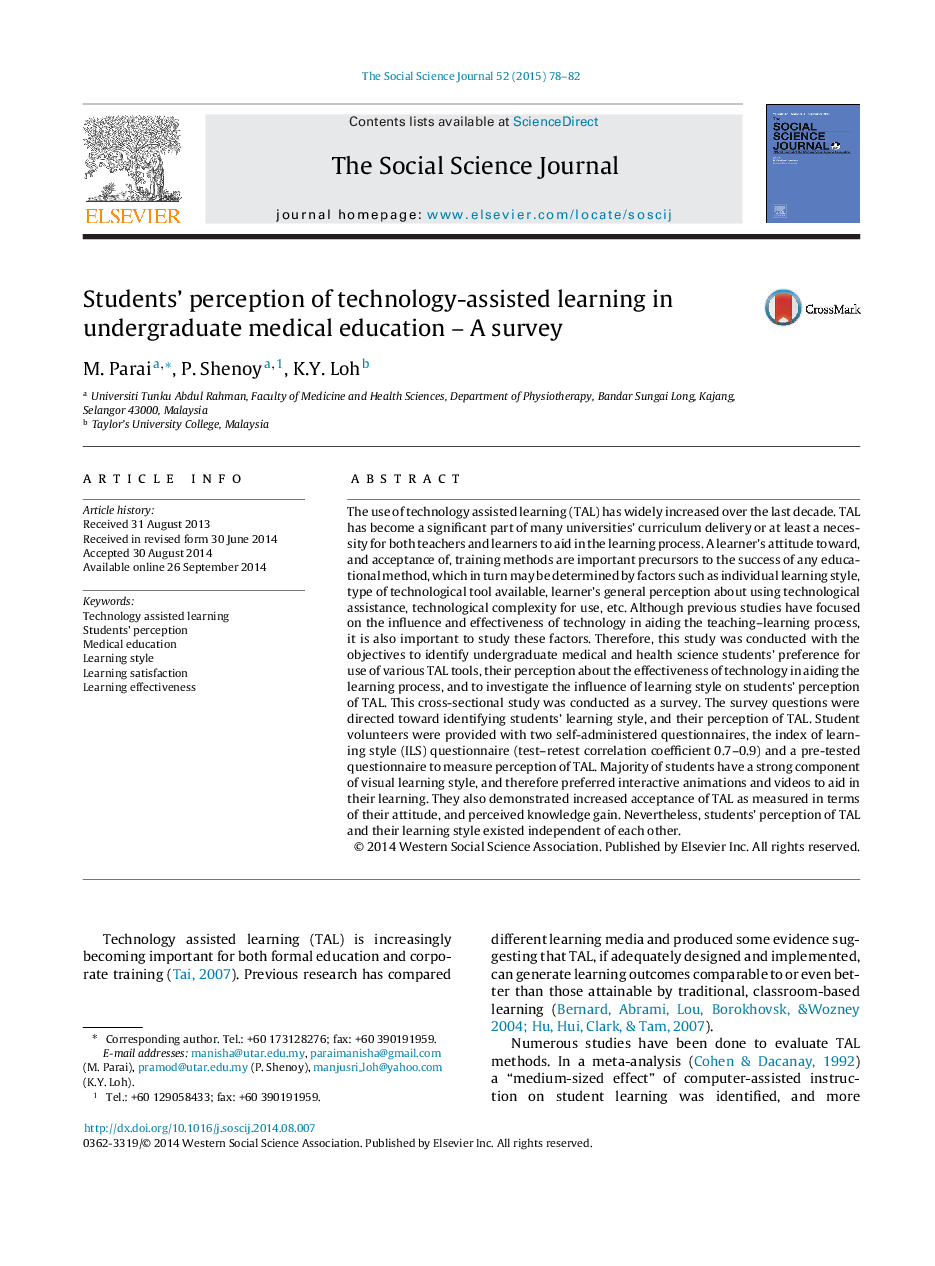| Article ID | Journal | Published Year | Pages | File Type |
|---|---|---|---|---|
| 140093 | The Social Science Journal | 2015 | 5 Pages |
•The results showed majority of students have a strong component of visual learning style.•Students preferred interactive animations and videos to aid in their learning.•Students demonstrated increased acceptance of TAL.•TAL was measured in terms of their attitude, and perceived knowledge gain.•The final conclusion showed students’ perception of TAL and their learning style existed independent of each other.
The use of technology assisted learning (TAL) has widely increased over the last decade. TAL has become a significant part of many universities’ curriculum delivery or at least a necessity for both teachers and learners to aid in the learning process. A learner's attitude toward, and acceptance of, training methods are important precursors to the success of any educational method, which in turn may be determined by factors such as individual learning style, type of technological tool available, learner's general perception about using technological assistance, technological complexity for use, etc. Although previous studies have focused on the influence and effectiveness of technology in aiding the teaching–learning process, it is also important to study these factors. Therefore, this study was conducted with the objectives to identify undergraduate medical and health science students’ preference for use of various TAL tools, their perception about the effectiveness of technology in aiding the learning process, and to investigate the influence of learning style on students’ perception of TAL. This cross-sectional study was conducted as a survey. The survey questions were directed toward identifying students’ learning style, and their perception of TAL. Student volunteers were provided with two self-administered questionnaires, the index of learning style (ILS) questionnaire (test–retest correlation coefficient 0.7–0.9) and a pre-tested questionnaire to measure perception of TAL. Majority of students have a strong component of visual learning style, and therefore preferred interactive animations and videos to aid in their learning. They also demonstrated increased acceptance of TAL as measured in terms of their attitude, and perceived knowledge gain. Nevertheless, students’ perception of TAL and their learning style existed independent of each other.
